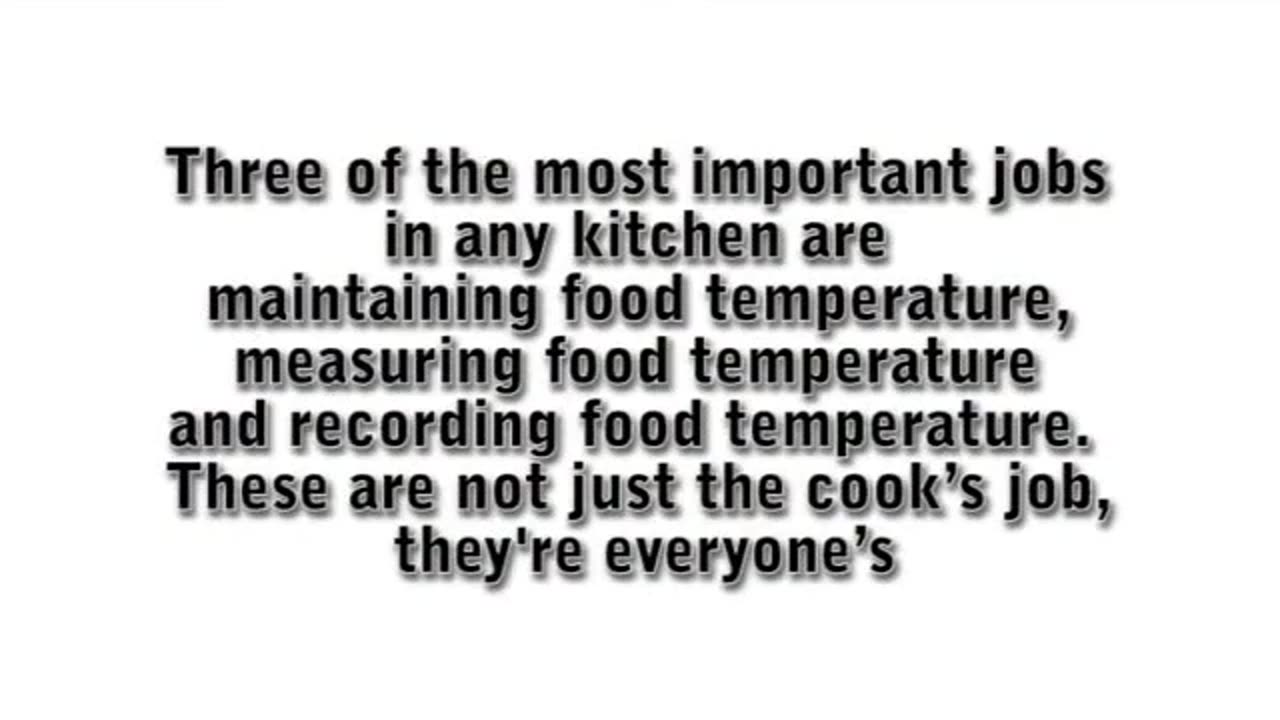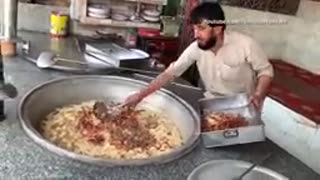Premium Only Content

Food Handler Training Course_ Part 4
### **Food Handler Training Course (Part 4) – Safe Food Storage**
Proper food storage is essential to maintaining food safety, preserving food quality, and preventing contamination. As a food handler, understanding safe storage practices helps protect customers from foodborne illnesses and ensures compliance with food safety regulations.
---
### **Objectives of Part 4**
1. Learn the principles of proper food storage.
2. Understand how to prevent contamination in storage areas.
3. Recognize best practices for organizing and maintaining storage spaces.
---
### **Importance of Safe Food Storage**
1. **Prevents Foodborne Illness:**
- Proper storage reduces the risk of bacterial growth and contamination.
2. **Preserves Food Quality:**
- Protects food from spoilage and maintains freshness.
3. **Complies with Regulations:**
- Adheres to food safety laws and guidelines, preventing penalties or closures.
---
### **Key Food Storage Principles**
#### **1. Temperature Control**
- Store food at the correct temperatures to prevent spoilage and bacterial growth:
- **Refrigerated Foods:** 0°C to 5°C (32°F to 41°F).
- **Frozen Foods:** -18°C (0°F) or lower.
- **Dry Foods:** 10°C to 21°C (50°F to 70°F) in a cool, dry area.
#### **2. FIFO System (First In, First Out)**
- Rotate stock to use older products first and reduce waste.
#### **3. Labeling and Dating**
- Clearly label all food items with their contents and the date of preparation or receipt.
- Include expiration dates to ensure foods are used within their safe timeframes.
#### **4. Proper Organization**
- Store food in a clean, organized manner to prevent cross-contamination.
- Use separate storage areas for raw and ready-to-eat foods.
---
### **Storage Best Practices**
#### **1. Refrigeration**
- Keep perishable items in the refrigerator at or below 5°C (41°F).
- Store raw meats, poultry, and seafood on the bottom shelves to prevent drips onto other foods.
- Avoid overloading the fridge to allow proper air circulation.
#### **2. Freezing**
- Freeze food immediately if it will not be used within a few days.
- Wrap items tightly to prevent freezer burn.
- Defrost frozen foods in the refrigerator, cold water, or microwave—not at room temperature.
#### **3. Dry Storage**
- Keep dry foods in sealed, labeled containers.
- Store items off the floor and away from walls to prevent pest infestations.
- Check for signs of spoilage or damage, such as bulging cans or torn packaging.
---
### **Preventing Contamination in Storage Areas**
#### **1. Physical Contamination**
- Use clean, food-safe containers for all stored items.
- Keep storage areas free of dirt, debris, and broken equipment.
#### **2. Chemical Contamination**
- Store cleaning products and chemicals away from food storage areas.
- Use food-grade containers and wraps to avoid contamination.
#### **3. Biological Contamination**
- Regularly clean and sanitize storage areas, including shelves and bins.
- Ensure proper temperature control to prevent bacterial growth.
---
### **Common Food Storage Mistakes to Avoid**
1. **Storing Raw and Cooked Foods Together:**
- Always separate raw foods from ready-to-eat items.
2. **Overpacking Refrigerators or Freezers:**
- Overloading can block airflow, leading to uneven cooling.
3. **Failing to Check Expiry Dates:**
- Regularly inspect stored foods and discard expired items.
4. **Leaving Foods Uncovered:**
- Cover all stored foods to protect them from contamination and drying out.
---
### **Examples of Safe Storage Practices**
**Scenario 1:** A chef receives a delivery of raw chicken, vegetables, and canned goods.
- **Safe Practice:** Store raw chicken on the bottom shelf of the refrigerator, vegetables on higher shelves, and canned goods in a cool, dry pantry.
**Scenario 2:** Leftover soup needs to be refrigerated.
- **Safe Practice:** Cool the soup quickly using shallow containers before placing it in the refrigerator.
---
### **Storage Checklist for Food Handlers**
- ✅ Maintain the correct storage temperatures for all food types.
- ✅ Label and date all stored foods.
- ✅ Use the FIFO system for inventory management.
- ✅ Keep storage areas clean and free from pests.
- ✅ Regularly inspect food for spoilage or contamination.
---
### **Tips for Success**
- Conduct regular training sessions on safe storage practices for all employees.
- Use thermometers to monitor refrigerator and freezer temperatures.
- Schedule routine cleaning and pest control for storage areas.
---
### **Conclusion**
Safe food storage is a cornerstone of food safety. By following best practices for temperature control, organization, and contamination prevention, food handlers can ensure the safety and quality of the food they serve.
---
Would you like to proceed to **Part 5: Cleaning and Sanitizing** or revisit another topic?
-
 20:24
20:24
HSESafetyInformation
8 months agoKABULI PULAO RECIPE - Original 40+ KG Afghani Meat Pulau Prepared - Street Food Qabili Plav Recipe_2
37 -
 LIVE
LIVE
Badlands Media
10 hours agoBadlands Daily: November 5, 2025
1,854 watching -
 3:01:00
3:01:00
Wendy Bell Radio
7 hours agoLike Sheep To Slaughter
73.6K103 -
 1:13:30
1:13:30
DML
3 hours agoDML LIVE: NYC Goes Socialist: Mamdani’s Victory
47.1K15 -
 1:04:43
1:04:43
Chad Prather
16 hours agoTruth on Trial: When Fear Meets Faith
74.1K45 -
 LIVE
LIVE
LFA TV
15 hours agoLIVE & BREAKING NEWS! | WEDNESDAY 11/5/25
3,933 watching -
 1:57:16
1:57:16
The Chris Salcedo Show
15 hours ago $0.18 earnedDems Win In Dem States...And They Celebrate?
37.3K18 -
 1:04:43
1:04:43
Crypto Power Hour
13 hours ago $0.04 earnedPsychology Of Crypto Market Cycles
53.8K6 -
 9:58
9:58
Clintonjaws
12 days ago $0.31 earnedKaroline Leavitt's Response To 'The View' Host's Nasty Attacks Is Perfect
58.5K30 -
 24:23
24:23
World2Briggs
22 hours ago $0.05 earnedTop 10 Towns You Can Retire on $1900 a month in the Pacific North West.
42.3K10